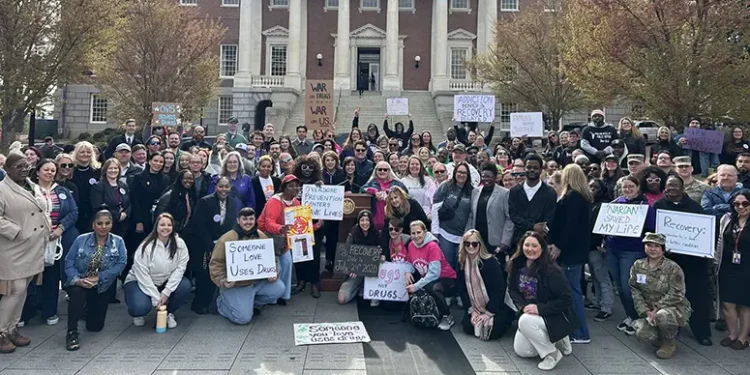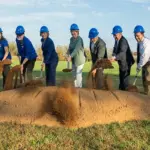Maryland’s Deadly Overdose Trends Thankfully Decreasing Over Recent Years
by Staff writer
In a powerful display of unity and determination, Marylanders converged on Lawyer’s Mall in Annapolis for the state’s inaugural Substance Use Awareness Advocacy Day. This landmark event, spearheaded by Lieutenant Governor Aruna K. Miller and Special Secretary of Overdose Response Emily Keller, served as a poignant reminder of the ongoing battle against the opioid crisis and a call to action for collective healing.
The rally drew a diverse coalition, encompassing community leaders from the most affected regions, passionate advocates, representatives from vital community-based organizations, elected officials, and, most importantly, individuals with firsthand experience of substance use and overdose. This convergence of voices underscored the widespread impact of the crisis and the shared commitment to finding solutions.
Lieutenant Governor Miller’s address resonated deeply, acknowledging the profound grief while emphasizing the power of action, recovery, and community. She was joined by key figures, including Special Secretary Keller, Comptroller Brooke Lierman, and representatives from the Maryland General Assembly and Baltimore City Council, all united in their resolve to combat the epidemic.
“The fight against overdose isn’t easy. It takes time, persistence, and a belief that change is possible,” said Lieutenant Governor Miller. “Because of the people we heard from today, lives are being saved and communities are healing. Together with our partners in the General Assembly, we’re committed to put words into action.”
Special Secretary Keller highlighted the recent positive trends, noting a substantial decrease in fatal overdoses in Maryland. The state’s Overdose Data Dashboard revealed 1,648 fatal overdoses in the past year, a significant 34.4% drop from 2023. This progress, she emphasized, is a testament to the collaborative efforts of state and local agencies, as well as community organizations dedicated to providing care and support. She also pointed to the state’s recently released strategic plan, which focuses on five critical areas: prevention, harm reduction, treatment, recovery, and public safety.
Comptroller Brooke Lierman emphasized the economic ramifications of the crisis, linking the state’s workforce decline to the rise in overdose deaths. She argued that investing in support for those struggling with substance use disorder is not only a moral imperative but also a crucial step towards revitalizing Maryland’s economy. “We reported in our analysis of Maryland’s economy that chronic diseases, including substance use disorder, are barriers to employment. Maryland’s workforce decline mirrors the rise in overdose deaths during the pandemic, and we are still struggling to increase our labor participation rate.”
The rally also served as a platform for attendees to contribute their insights on strengthening Maryland’s overdose prevention efforts. The feedback collected will be instrumental in informing the Maryland Overdose Response Advisory Council, chaired by Lieutenant Governor Miller, as they develop future strategies.
The Moore-Miller administration’s commitment to addressing the crisis is evident in its comprehensive approach. The state’s updated strategic plan provides a roadmap for action, while the allocation of $12.4 million in competitive grant awards from the Opioid Restitution Fund demonstrates a tangible investment in solutions. With an expected total of over $650 million in settlement funds over the next 15-18 years, Maryland is poised to make significant strides in combating the epidemic.
The administration’s collaboration with local partners in Baltimore City, the region most severely impacted, underscores its dedication to targeted interventions. Community walks in areas like Cherry Hill, initiated by Lt. Governor Miller and Special Secretary Keller, signify a commitment to understanding and addressing the crisis at the grassroots level. The Substance Use Awareness Advocacy Day marked a pivotal moment in Maryland’s fight against the opioid crisis. It was a day of shared grief, renewed hope, and unwavering commitment to saving lives and building stronger, healthier communities.









